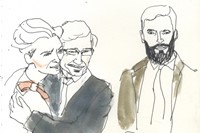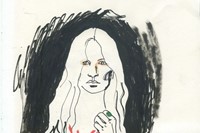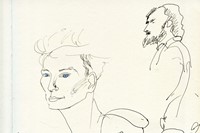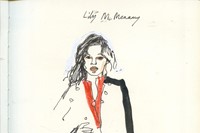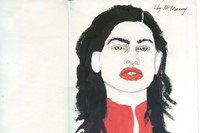As the AnOther Magazine and Dior premiere of A Bigger Splash played out at The Curzon Mayfair to a star-studded audience, we took time out with the movie's director and its prolific protagonist, who discussed filming on the remote island of Pantelleria, transmedia narratives and their creative collaborations. Here, their interviews are accompanied by the live illustrations of renowned artist Laura Quick, who doodled her way through the evening's festivities.

Tilda Swinton
What drew you to the role of Marianne Lane?
Well, what’s interesting is that Luca [Guadagnino] and I have known and worked alongside each other for such a long time, and we are always talking about lots of different projects and collaborations – but, this wasn’t one of them [laughs]. This was quite a last minute request. But, what I really wanted to do was give this character a twist, and proposed that she couldn't speak, and he agreed to it. From that moment onwards I was hooked, I felt I knew her intimately.
How did you enjoy working together on the project?
It was an absolute ball, I mean it was Pantelleria in the summer, it was like an extended family holiday. We even got to know the locals over those two months. I hope we go back there to do a screening.
How did you get into character? I sensed a certain air of Mick Jagger and PJ Harvey...
It’s a wonderful idea that I might prepare by doing that. I love that thought. But it just wasn’t a conscious thing. As I say given the context of Marianne Lane not speaking, the second that idea came into play I felt that I knew this woman very, very well. All of the fantasy rock stars that we’ve either known or dreamed about all our lives possibly came into play, but to be honest it felt more domestic than that. As Dakota’s character says in the film, she’s "domestic for a rock star." She’s just trying to find a real life among the sequins.
"She's just trying to find a real life among the sequins" - Tilda Swinton on Marianne Lane
Indeed, 'growing up' is the prevailing theme of the movie...
Exactly. It’s about growing up and how difficult that actually is. Marianne and Harry have been living the same life since they were 19, but when one person wants to switch it up it sends everything else into orbit. It’s like an addict, or anybody who wants to get clean, it’s tricky for everybody else, because it rocks the boat.
Raf Simons designed the costumes, which were fabulous. Did you have a favourite?
It’s hard to choose but I loved the summer dresses – they were just so easy, I wore them all last summer and in fact I have them all. What Raf [Simons] created for Marianne Lane is so different to what he was creating at Dior that particular season. He actually said to Luca and I that it "was a real thrill to follow a narrative" He's wonderful to work with.
You appeared on the cover and gave an interview in character as Marianne Lane for the A/W15 edition of AnOther Magazine. How was that experience?
Wild! I mean she barely says a word in the film, so it was brilliant. I want her to do an album too...
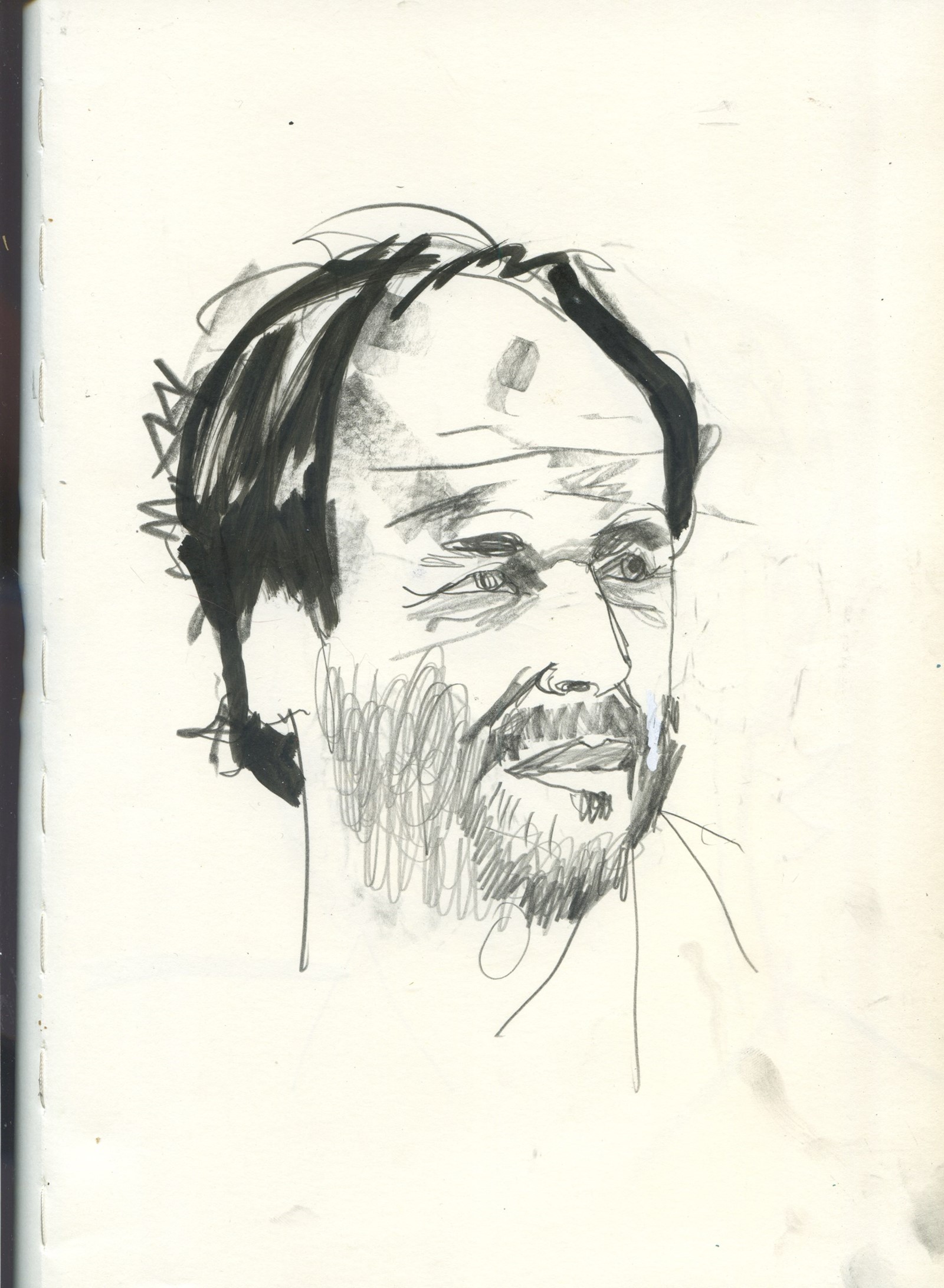
Luca Guadagnino
You and Tilda have collaborated frequently; what do you enjoy about working together?
The question is not just about working; it’s about life. It was serendipity that brought us together in 1994 and, ever since then, we have discovered a very strong bond. It developed right from the very beginning, and is made out of exploring places and stories and characters – seeing life as an adventure, and a very strong sense of joie de vivre. So, for me, to be with Tilda is to be with someone who is family.
Did you always envision her for the role of Marianne Lane?
I think the making of this movie has been kind of peculiar and, in a way, tentative – Tilda actually came on board fairly late in the process. The Marianne Lane that was on the page was a different incarnation to that which ended up in the movie – and that was mostly because of Tilda’s input. For example, in the original script, Marianne was an actress – but Tilda felt that we should empower the music that Harry Hawks brought into the film, so we morphed her into a rockstar. And it was Tilda who came up with the great concept of Marianne Lane’s inability to use words, and needing to find a different method of communication. The simple idea that Marianne Lane cannot speak because of an operation to her vocal cords is exquisitely organic; it’s genius. When Tilda proposed it, I was like, ‘Of course! Why didn’t we think of that already?’
So the entire construction of the film was collaborative, in a sense?
Yes. The concept of making a movie in which the director dictates is kind of exotic – and absolutely not truthful. Directing means allowing a great deal of collaboration, and listening, and having the ability to change your mind.
"The concept of making a movie in which the director dictates is kind of exotic – and absolutely not truthful" – Luca Guadagnino
Because you are close friends, did you enjoy filming together?
We were on the island for two and a half continuous months – and in general, I’m not a great fan of shooting, it takes a lot out of me. You always need to be ready to both create and answer questions, and prepared to go against the flow. If you add that to the tough intensity and savage beauty of Pantelleria, then you end up with something not all that nice! The island itself is uncompromising and relentless, and I hope we witnessed that in the movie.
How was it seeing your creation, Marianne Lane, exist outside of the film – through the interview and cover story in AnOther Magazine?
I think that making a movie is not just making the movie – it is also about having thoughtful ideas, and embracing all the aspects of its launch. For me it’s quite remarkable to have collaborated with such an amazing magazine – and such an important, relevant figure in contemporary culture as Jefferson Hack. To be with him, and to investigate avenues of communication; to find a story behind the story and explore how to tell it, how to make the narrative jump out of the actual movie into reality… it’s so cool!

